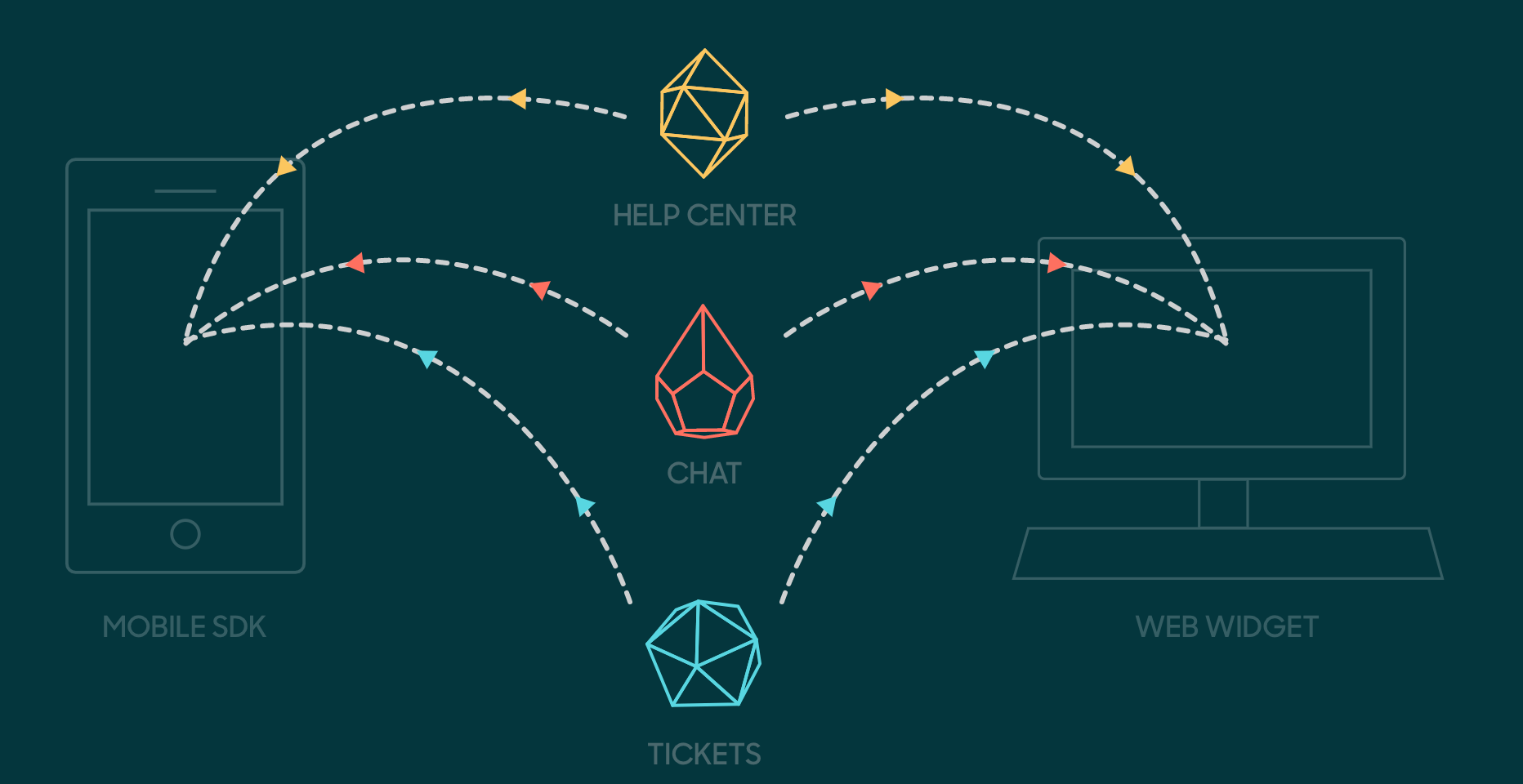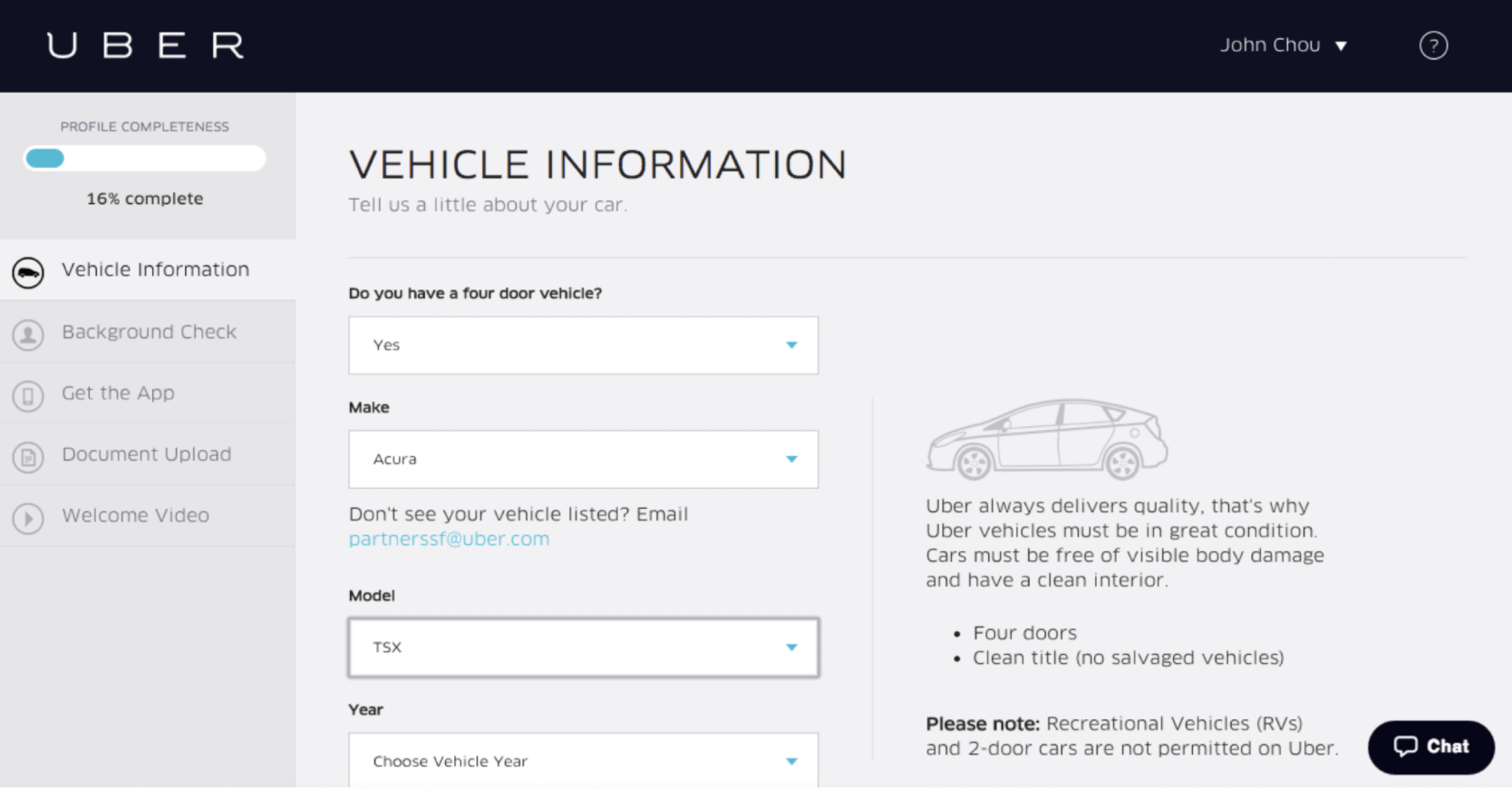How Zendesk launched Embeddables — and changed the customer service industry forever

Launching a new product is difficult, sure. But upending the narrative behind an entire industry is, for many SaaS companies, an entirely different game.
Such monumental shifts require transformations across every aspect of product development. From team structure to product strategy to customer interactions, the very fabric of how a company ideates, builds, and delivers products must evolve to meet the new demands.
For Sam Boonin and Maxime Prades, though, it was just another day in the office at Zendesk.

Prades—then-Senior Product Manager, now Director of Product Management at Facebook—and Boonin—ex-VP of Product and Platform, now product advisor to B2B SaaS startups (including Productboard)—spearheaded the development and launch of Embeddables, Zendesk’s answer to seamlessly integrating customer support tools into websites and mobile apps.
Embeddables marked a monumental shift not just for Zendesk, but for the software market as a whole. Embeddables gave businesses the ability to put help right at customers’ fingertips, replacing outdated support portals with deeply integrated and branded chat, ticketing, and knowledge management—right within a mobile app or web page.
In doing so, they changed the way startups around the globe interact with their customers, elevating customer support from the basement of the customer experience to the penthouse suite for companies large and small.
Of course, we wanted to learn how they did it—so we sat down with Prades and Boonin to find out how they built Zendesk’s Embeddables—and to share those insights with you.
The origins of Embeddables
Embeddables is, at its core, a simple product. It consists of a combination of an advanced web widget and a mobile SDK for both Android and iOS. Combined, they allow developers to seamlessly embed Zendesk’s help desk, chat, or support ticket functionality into nearly any app, website, or device, maintaining a consistent experience and keeping friction to a minimum.
But while this kind of experience might be commonplace today, in 2014 it was, for the most part, a pipe dream.
2014 marked eight years after the introduction of the first app store. Mobile apps had stopped being a novelty, instead becoming a part of everyday life. Both adoption and engagement rates for mobile apps were plateauing—that left teams scrambling to maximize retention and provide a more unified user experience across their apps.
Improving the customer support experience was an obvious starting point—but the technology was behind the times. Traditional customer support platforms were built for optimizing the experience for support reps—not for customers. Instead of placing knowledge where customers needed it, they had to chase it down—if they were able to find it at all.
Only a small handful of mobile app developers had the resources to invest in building cohesive in-app support experiences. “Up until that point, [customer support] was very feature-oriented,” Boonin explains. While Zendesk did provide a feedback tab that popped up beside a webpage, the experience for customers was lacking. “It was really feature-limited,” Boonin shares, “and customers were really frustrated by it.”
Zendesk was also pushing to modernize its image. At the time, the market still saw Zendesk as the “old-school” alternative to upstart support platforms like Intercom and Helpshift. Says Boonin, “we made software where we controlled the user experience. This was the first time we really had to think about building software where we didn’t control the end-user experience.”
“We were a company that had built our reputation by making out customers’ lives better, but never our customers’ customers.”
What Zendesk did have, though, was a comprehensive customer-facing API — an API that became the core of Embeddables.
Towards the end of 2014, Boonin and Prades began seeing forward-thinking customers like Uber DIY’ing their own version of Embeddables. Using the Zendesk API as a backend and building their own customer-facing support flows, they would mix knowledge base articles and support prompts right into their mobile app—all while giving support reps the same experience they were familiar with.

That gave Prades and Boonin the initial confidence that their idea would be well-received—and the idea for Embeddables was born.
Establishing relationships with early adopters
Those early trailblazers became the beta-testing team and launch partners for Embeddables. Prades’ team partnered with a half-dozen customers—including big names like Airbnb, Uber, and Swiftkey — to validate early features and stress-test the SDK.
But it wasn’t just developers that needed support. Embeddables gave customers the necessary tools to build their vision—but executing on that vision was still up to the decision-makers.
Boonin and Prades quickly realized their job wasn’t just to launch a new product. It was to help their customers be successful with the new product — a task just as much about team relations and internal politics as it was product design.
The problem: many of Embeddables’ core customers—directors and VPs of customer support—were afraid of talking to their product teams. Boonin recalls an early gaming customer who wanted to give their “whales”—the small number of players who generate the majority of revenue—a white-glove support experience. That kind of experience requires deep collaboration between customer support and development leadership—but having the director of support request a simple FAQ to their app from the head of product who’s building the game was nearly unheard of.
“We gave early customers privileged access to us... They became partners in designing the product.”
To counter, Zendesk invested heavily in their San Francisco-based platform enablement team, reporting into the product team and tasked with co-developing alongside their early customers and helping them succeed. “We gave them privileged access to us,” Maxime explained. “We’d go to their office, sit down and work with them and find out exactly what they needed. They became partners in designing the product.”
The devrel team built a collection of playbooks, guidelines, and articles explaining how to integrate the APIs into customers’ products. They shared a presentation titled “Embeddables Candy” with internal staff, showing off examples of how their top customers were using Embeddables.
They even built and shipped an open-source mobile app called Remember The Date. “It was a real app in the Android and Apple app stores,” Maxime laughs. “Salespeople would tell customers to go download it and see for themselves, and after the call, they would show it around the office to their developers and staff.”
The app demonstrated how to implement ticketing, FAQs, and other key features of Embeddables, with all code being available to developers via GitHub.
Refactoring products…
Of course, the close integration between Embeddables and customers’ existing platforms quickly became both a blessing and a curse.
While Zendesk boasted a wide range of tech unicorns among their customer base, they also needed to continue serving the needs of the thousands of companies using their support software every day. That meant finding a careful balance between providing a standardized set of features and giving advanced teams the required customizability to seamlessly integrate with their platform.
As is the case with many new products, that meant bloat quickly became a problem. And it was a BIG problem.
Other than the Mobile team who founded the idea for Embeddables, Zendesk’s developers lacked experience building for mobile—and for performance. Early customers complained that their app size had ballooned into gigabytes after implementing the Embeddables SDK. “We were very focused on features, and not so much focused on performance,” Sam jokes.
The team learned from their early mistakes, making a bunch of changes to accommodate the new product. They broke the mobile SDK down into a series of plug-and-play components—developers integrating embeddables into an iOS or Android app could simply check a box if they wanted to integrate ticketing into their app. Likewise, it gave some of Zendesk’s gaming customers the ability to exclude certain features—gaming companies, for instance, wanted to deter players from submitting large numbers of support tickets.
That decision to break up the product into components became the genesis of Embeddables’ “diamond” branding:

That attractive and aspirational branding, Boonin shares, became a key part of Embeddables’ success, helping Zendesk to escape their “old and stodgy” brand image and modernize their messaging.
… and product teams
Breaking up the product also meant rethinking how Zendesk structured its product team. Zendesk wasn’t a remote company. The core team for Embeddables included one team in Melbourne tasked with transforming the existing Feedback tab into the new web widget team along with a second mobile development team based out of Dublin.
Building any product—let alone one with the complexity of Embeddables—across three different continents demands massive coordination. For Prades—acting as the lead product manager from his San Francisco office—that meant a ceaseless string of late evening and early morning calls between three timezones who could never really meet together.
“Dublin would sometimes meet with Melbourne,” Prades explains, “but without San Francisco, because there’s no way that works. And then San Francisco would meet with Melbourne and with Dublin, but there was no way we could get all three.”
Each team held independent daily stand-ups within their local timezone to ensure the SDK and the web widget stuck to their independent roadmaps. Prades held weekly check-ins with each team, acting as the glue holding everything together. When he wasn’t attending meetings, he would coordinate with Boonin’s product marketing team to build the launch plan for Embeddables and with the devrel team to onboard customers.
One of the rare times the entire team could meet: the launch party. “I remember launch day, showing up to the office at 3 am to have embeddables-branded cupcakes with the whole team,” Maxime laughs.
3 lessons product managers can learn from Embeddables
Launching Embeddables might have been trial-by-fire for Prades and Boonin—but the lessons learned during the process proved invaluable. Here are a few takeaways you can apply to your own products:
Get customers involved from the beginning
Your customers are always the best source for ideas. They’re the ones using your product every day—and the ones most keenly aware of the problems they need to solve. Paying attention to those customer needs—and watching how their customers were attempting to solve those problems on their own—gave Prades and Boonin the initial inspiration for Embeddables.
Product ideas don’t spring fully formed from the minds of individual product managers. Deep user insights are the key to product success—the PM’s job is to translate those ideas into a cohesive product vision and detailed roadmap. Start by building a process for collecting feedback and ideas from across your organization, and organizing that feedback into insights. When you’re in the weeds building a product as complex as Embeddables, having a structured system for generating ideas will prove invaluable.
Don’t underestimate the importance of relationships
Launching a product like Embeddables takes much more than choosing the right features to build—something Prades and Boonin learned the hard way. Even if your product isn’t as intricate as Embeddables, investing in customer education helps your customers get the most out of your products.
Customer success doesn’t have to mean co-developing alongside your customers as it did for Prades and Boonin. At Productboard, our Customer Education Center educates customers not just about how to get started with our platform, but about product management best practices and how to grow a product organization founded on principles of Product Excellence. Before you begin building your next feature, think about how you can help customers make the most of the ones you already offer.
The story matters just as much as the product itself
When I asked Prades about his biggest lesson learned from launching Embeddables, he immediately brought up how the Embeddables story helped renew morale and motivation within Zendesk. “When you launch a new product,” he shares, “the story matters so much. I remember at the time I wasn’t a big fan of making such a big deal about a V1 launch—but it was actually a really smart move.” That visibility—both internal and external—added immense value to the Embeddables launch.
Think about your next planned product or feature launch. How does it fit into your product vision? What kind of better future will your product bring about? By answering these questions, you can rise above the day-to-day challenges, become more proactive, and give your product a better shot at making a dent in the universe.
The rise of the customer-first experience
Embeddables was a huge bet for Zendesk—not just because of the complexity of the product itself, but because it marked such a turning point for both Zendesk and for the customer support industry as a whole.
Fortunately, it was a bet that paid off in spades. Through a series of smart moves—from product to platform, from local to global, and from feature-focus to user-focus—launching Embeddables gave Zendesk the opportunity not just to better serve their customers, but to elevate customer support from an afterthought to a core part of the customer experience.
Seven years later, Embeddables remains the nexus of innovation at Zendesk, driving recent product launches like an AI-powered Answer Bot that would have been merely a pipe dream in 2014.
Maybe those late-night meetings were worthwhile after all.





![The CPO’s Blueprint for Annual Planning: An Opportunity to Drive Change [Part 3]](https://www.productboard.com/wp-content/uploads/2024/11/strategy-blueprint-560x293.png)
